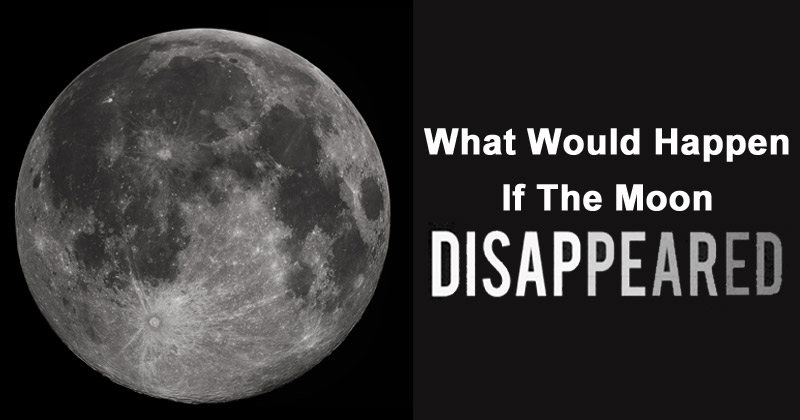The moon brings light into the dark as the backdrop for romantic nights. It also keeps the seas in motion by causing tides. But without the moon, would the earth be the same Or not, what would happen if the moon disappeared?

As you might already know the answer to the question is no. People would have to do without much more than just full moon nights, if there are people without the moon at all. Because our satellite, which is only about a quarter the size of the earth and is more than 380,000 kilometers away from the earth, is to be thanked for life on this planet.
Moon Controls Earth’s Rotation – What would happen if the moon disappeared?
If the moon did not exist, the globe would rotate three times faster on its own axis than it does now, because the moon’s gravitational pull lowers the speed of the earth’s rotation. Without the satellite, the day on earth would be just eight hours because the earth would have completed one revolution within this time. On a planet that rotates so quickly, the wind movements would be much stronger than they are now. The hurricanes would sweep over the earth at 300 to 500 kilometers per hour.
Climate Would Somersault

Without the moon, the temperatures of earth in summer would be around 60 degrees Celsius and in winter it would be a clattering minus 50 degrees Celsius. In the summers, the sun would not go down for months, the winters would be accompanied by equally lasting darkness. It would be a whopping 80 degrees in the polar regions, while everything near the equator would sink under ice and snow. At least for now. Then at some point everything will be completely different again because the climate would somersault again.
But How Would That Happen?
With its gravitational pull, the moon ensures that the angle of inclination of the earth’s axis remains stable for decades and fluctuates at most between 22 and 25 degrees. Today it is 23.5 degrees. The earth is exposed to many gravitational forces like the attraction of the sun affects earth just as much as the attraction of large planets, namely Saturn and Jupiter. These influences are so great that the earth will begin to spin without its satellite. Your axis inclination would fluctuate between 0 and 85 degrees. The earth would tip every few million years. At an angle of 60 degrees or more, the climate would be as described above until the earth sways again.
The fact that the earth’s climate was able to stabilize and thus make life possible is largely due to the moon. Numerous animal species have since developed depending on the moon. They orientate themselves by its light at night or need the pale lighting to be active at all.

Also Read: How Big Are Shooting Stars?
Life-supporting Influences
And then of course there are the tides. Even the sun, which is 400 times further away from the earth than the moon (around 150 million kilometers), tugs at our oceans due to its huge mass, but only about half as much.
What would happen if the moon disappeared? If we had no moon, the water movement would be low and the exchange of mineral nutrients in the world’s oceans would be significantly reduced or even prevented. Without the satellite, the oceans and coastal areas could never have become as diverse as they are. Some sea creatures orient their lives according to the tides: turtles and horseshoe crabs, for example, are washed ashore with the tide to lay their eggs there.
The tides clearly show how strong the moon is. The maximum tidal range on the Canadian Atlantic coast is sometimes a proud 21 meters. The earth’s crust is also deformed by lunar gravitation. The land masses rise when the moon is full. This is neither visible nor noticeable, but this process means that earthquakes occur more frequently on full and new moon. Statistics also prove it.
Also Read: Can You Shoot A Gun Or Blast A Bomb In Space?
As far-reaching and life-supporting as the moon’s influence on the earth is, at some point the blue planet will lose its satellite. The moon moves away from the earth slowly but steadily. It is currently moving away from us by almost four centimeters each year. Also, its effect on the earth is gradually decreasing and at some point the forces of the Sun, Saturn and Jupiter will dominate and the earth’s axis will inevitably tilt into a more hostile position. But we can rest assured that it will still take about a billion years.


